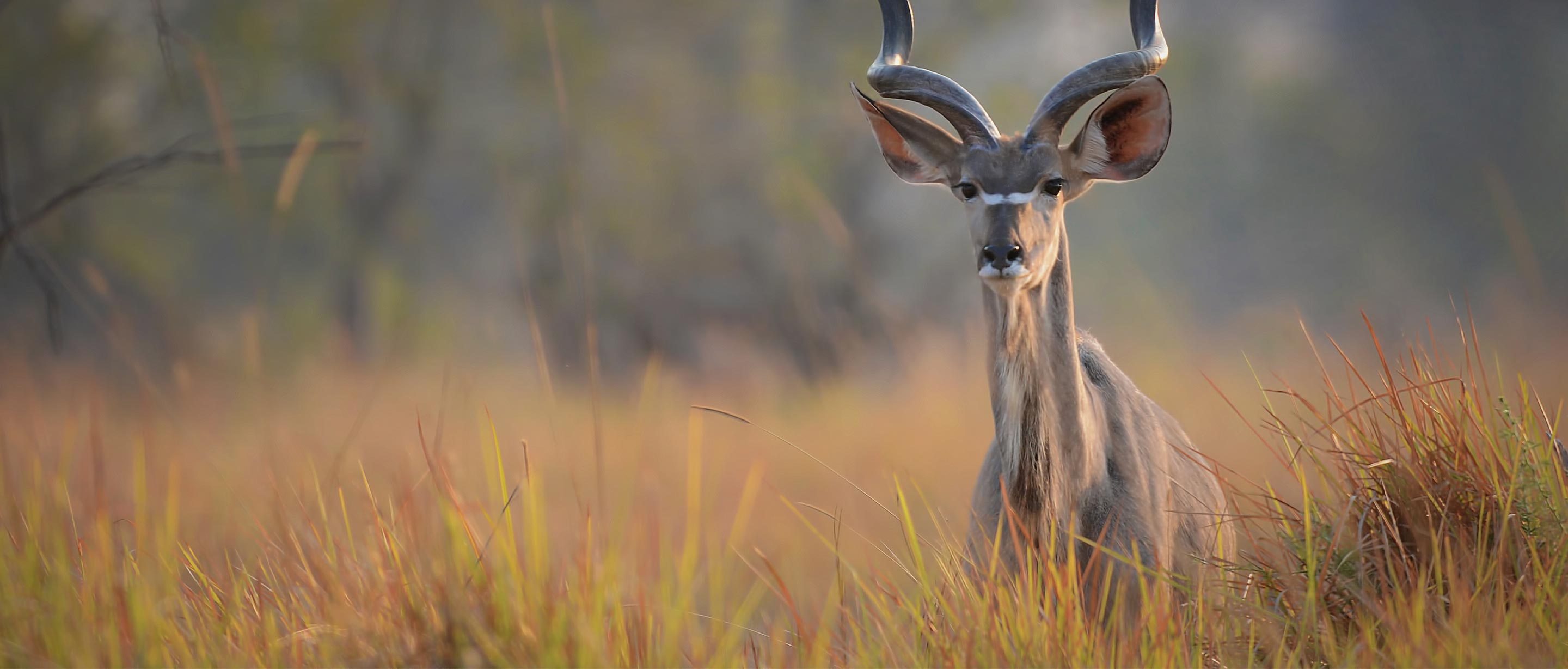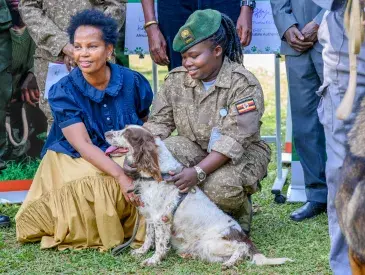What is a kudu?
Both the greater kudu and its close cousin, the lesser kudu, have stripes and spots on the body, and most have a chevron of white hair between the eyes. Males have long, spiral horns. The greater kudu's horns are spectacular and can grow as long as 1.8 meters (about 6 feet), making 2-1/2 graceful twists.
Female greater kudus are noticeably smaller than the males. By contrast, lesser kudus are even smaller — about 90 centimeters at the shoulder. Males can weigh up to 105 kilograms (230 pounds), and females generally weigh about 22 kilograms less. Lesser kudus have smaller horns than their larger cousins and have conspicuous white patches on the upper and lower parts of the neck. Although both species are bluish-gray, grayish-brown, or rust color, the lesser kudus have five to six more lateral white stripes, for a total of 11 to 15. Both species have a crest of long hair along the spine, and greater kudus also have a fringe under the chin.
Greater kudu (Tragelaphus strepsiceros), Lesser kudu (Tragelaphus imberbis)
Greater kudu: 120 to 315 kilograms (260 to 700 pounds); Lesser kudu: 60 to 105 kilograms (130 to 230 pounds)
Greater kudu: 100 to 150 centimeters at the shoulder (40 to 60 inches); Lesser kudu: 90 to 105 centimeters at the shoulder (35 to 42 inches)
Up to 10 years in the wild; up to 23 years in captivity
Dense brush or forest
Herbivorous
Up to 9 months
Leopards, hunting dogs, spotted hyenas, humans
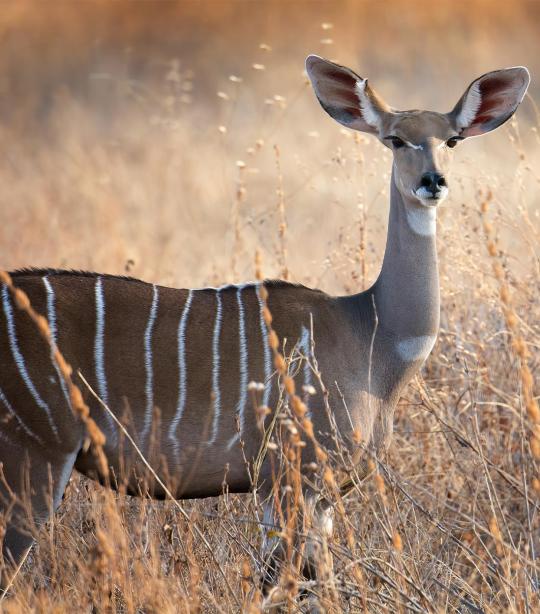
Challenges
Humans are preying on kudus.
Their numbers are affected by humans hunting them for their meat, hides, and horns. Their horns have long been prized in Africa for use as musical instruments, honey containers, and symbolic ritual objects.
Kudu habitats are being destroyed.
People are taking over their habitats for charcoal burning and farming.
Solutions
Our solutions to protecting the kudu:
African Wildlife Foundation engages government entities to help plan and propose alternative solutions to habitat loss and fragmentation by providing its scientists and researchers as resources to assist in proper planning to ensure a balance between modernization and conservation.
AWF engages private investors and brings them together with communities living in critical landscapes to construct tourism lodges like Satao Elerai, a luxury tourist lodge situated on 5,000 acres in Kenya. The land is protected, so kudu and other wildlife can roam safely and freely, and the revenue is reinvested into the community and into local wildlife conservation.
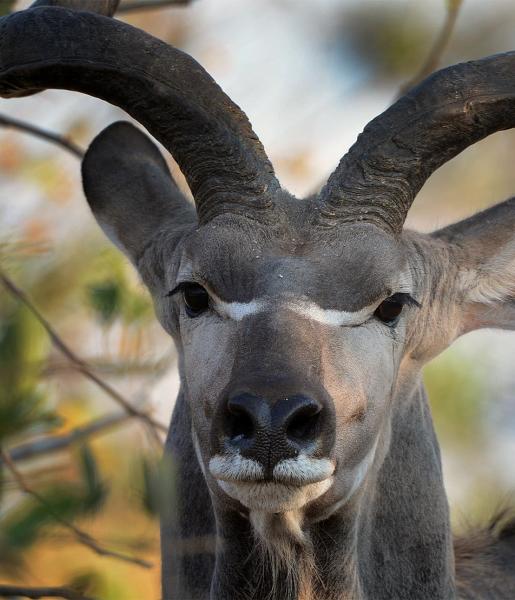
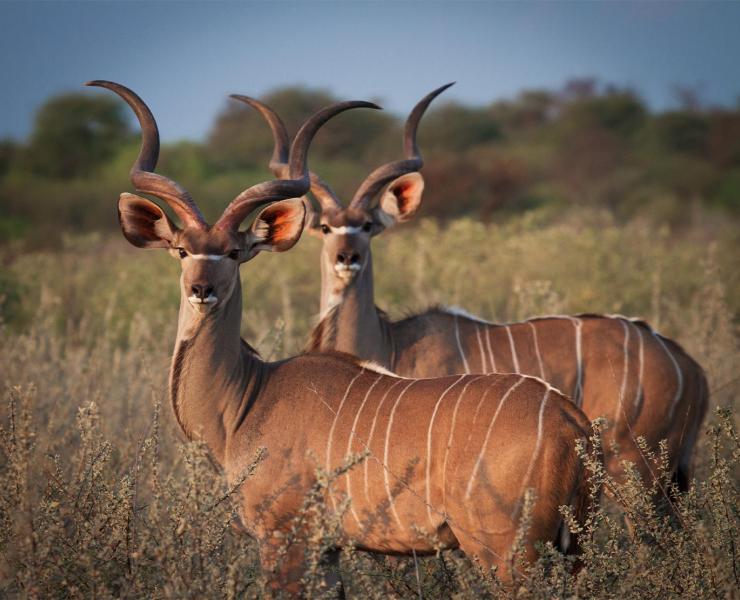
Behaviors
Kudus are peaceful rulers.
Males sometimes form small bachelor groups, but more commonly, they are solitary and widely dispersed. Dominance between males is usually quickly and peacefully determined by a lateral display in which one male stands sideways in front of the other and makes himself look as large as possible. Males only join females — who form small groups of six to ten with their offspring — during mating season. Calves grow rapidly and at six months of age are fairly independent of their mothers.
Mother kudus stash their young out of sight for long periods of time.
The pregnant female departs from her group to give birth, leaving the newborn lying out for four or five weeks of age, one of the longest periods of all the antelopes. The calf then begins to accompany its mother for short periods of time and by three or for months of age, it is with her constantly. Soon after, the mother and calf rejoin the female's group. Calves grow rapidly and at six months, they are fairly independent of their mothers.
They wear camouflage coats.
Their cryptic coloring and markings protect kudus by camouflaging them. If alarmed, they usually stand still and are very difficult to spot.
Diet
Kudus love to feast on fruits.
These antelopes are browsers and eat leaves and shoots from a variety of plants. In dry seasons, they eat wild watermelons and other fruit for the liquid they provide. The lesser kudu is less dependent on water sources than the greater kudu.
Habitats
Where do kudus live?
Lesser kudus are found in acacia and Commiphora thornbush in arid savannas; they rely on thickets for security and are rarely found in open or scattered bush. Greater kudus are found in woodlands and bushlands.
